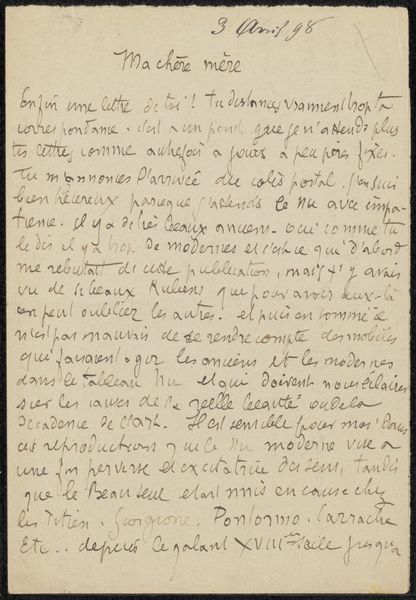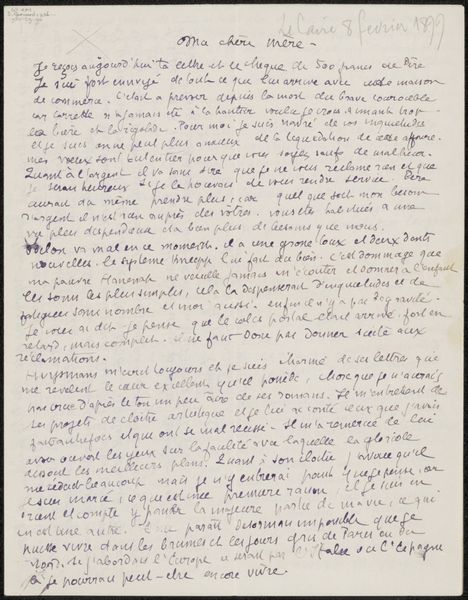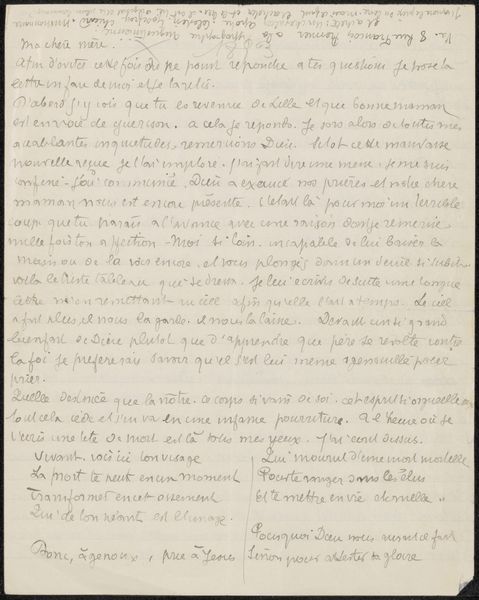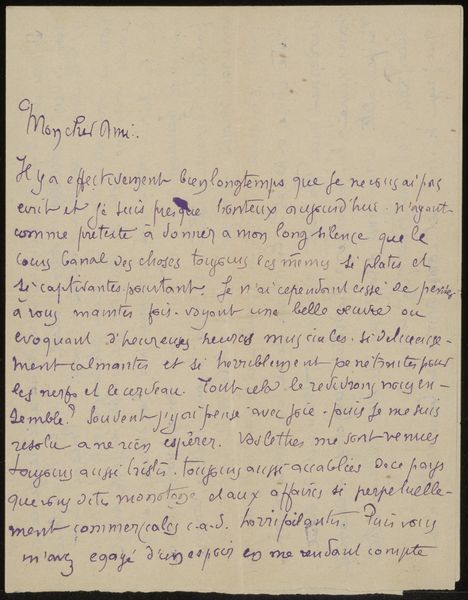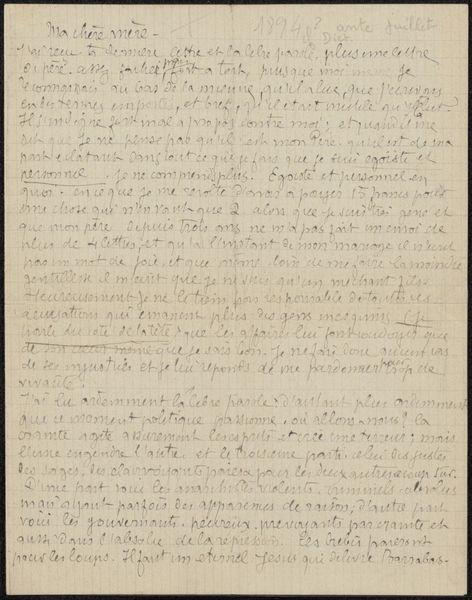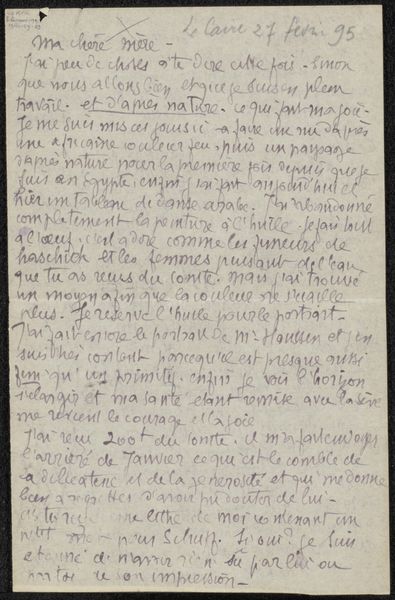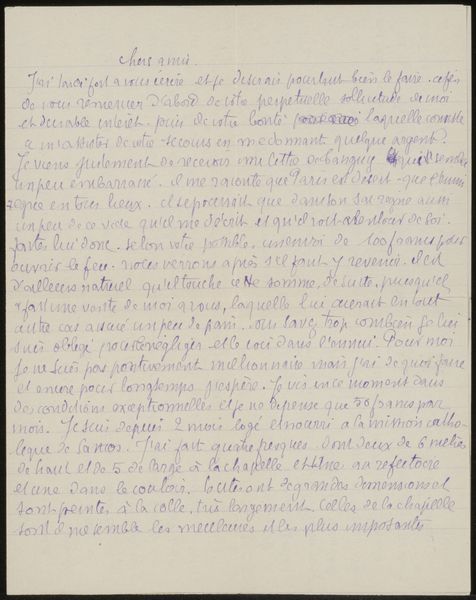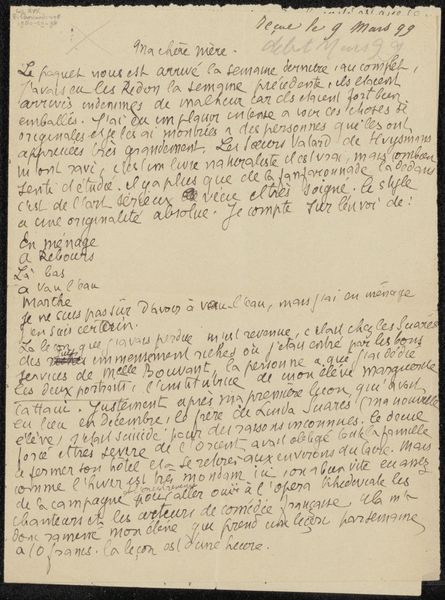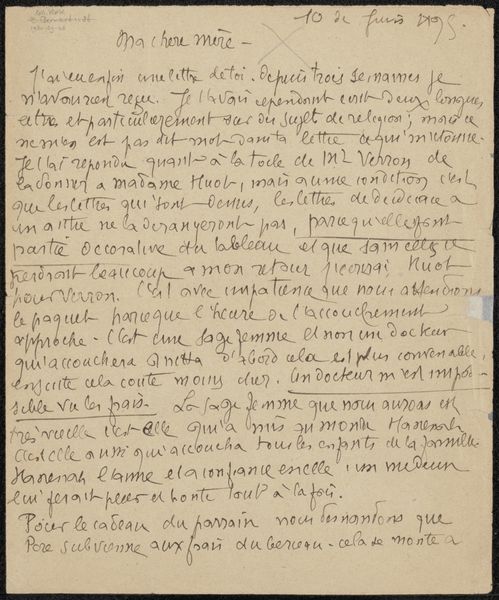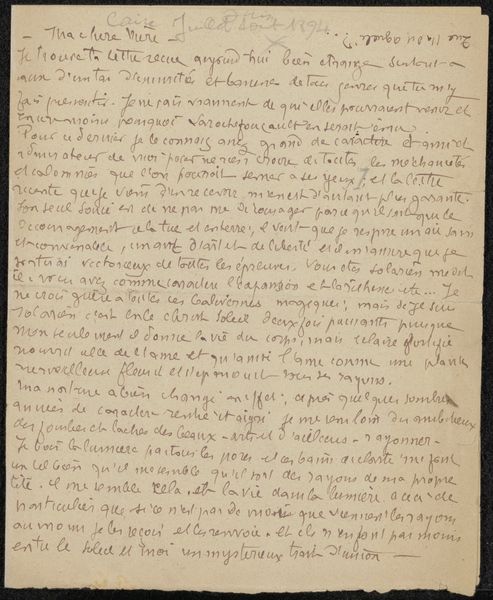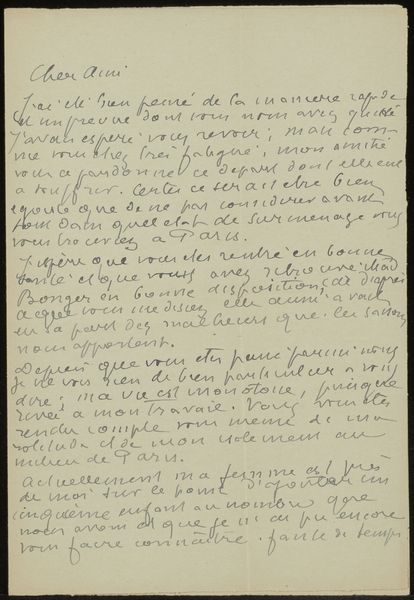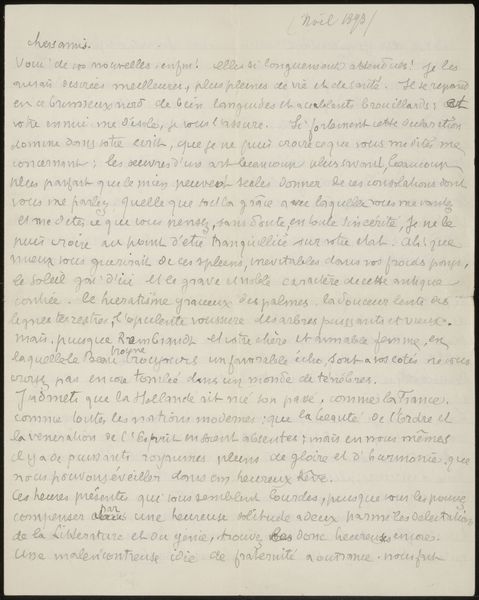
drawing, paper, ink
#
drawing
#
paper
#
personal sketchbook
#
ink
#
intimism
Copyright: Rijks Museum: Open Domain
Curator: I am drawn to how Bernard uses readily available, cheap materials like ink and paper to communicate intimately with his friend. We see process bare, direct. Editor: This is "Brief aan Andries Bonger" ("Letter to Andries Bonger"), from before 1895, a drawing by Emile Bernard in ink on paper. It strikes me as quite a personal and private thing. How do you interpret this work? Curator: Well, first consider the social context. Epistolary exchanges in the late 19th century provided a crucial network for artists. Letters functioned not only as communication but also as a form of studio practice – a space for developing ideas, testing theories, and constructing identities. We might ask, how did the act of writing shape Bernard’s thinking and artistic production? Editor: So, the letter itself becomes almost like a draft for his other work? Curator: Precisely. And it also forces us to reconsider hierarchies within art. Is this ‘merely’ correspondence, or can we see in its materiality and labor the seeds of artistic innovation? The very act of inscription, the weight of the ink, the texture of the paper, speak to the means of production, not just the message. Editor: It’s fascinating to consider how the simple act of writing and sending a letter could be viewed through the lens of artistic production and materiality. It gives such an ordinary object a completely new depth. Curator: Indeed, and that is precisely what a materialist perspective offers: to unveil the complex layers of labor, social context, and means of production behind seemingly simple objects.
Comments
No comments
Be the first to comment and join the conversation on the ultimate creative platform.
